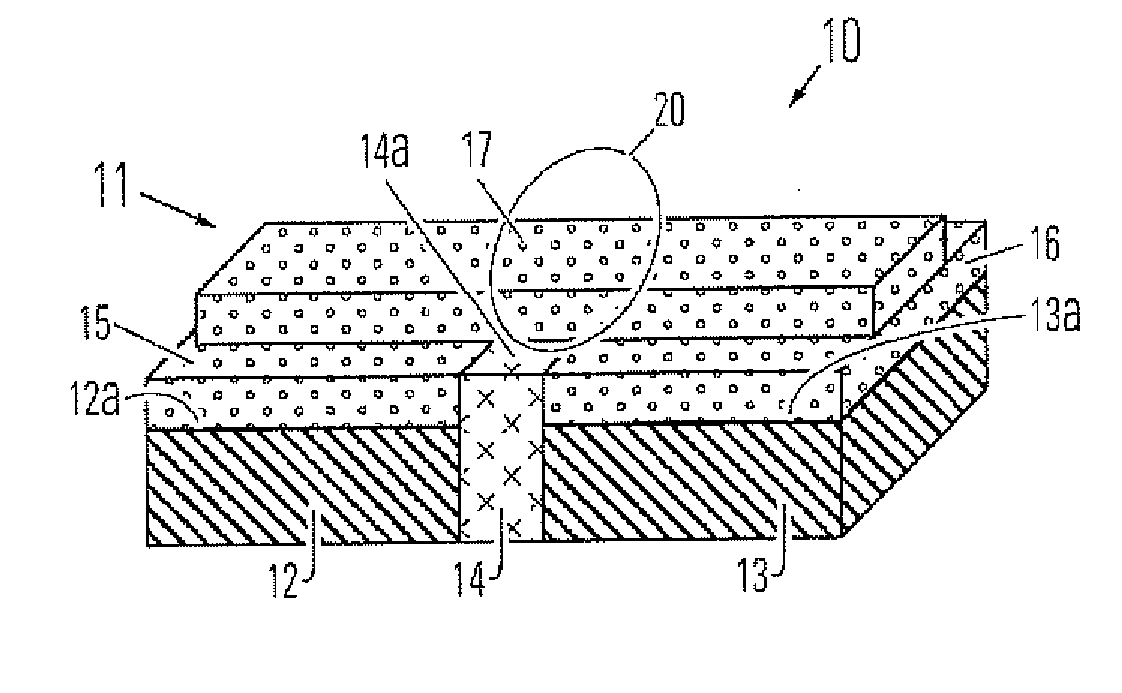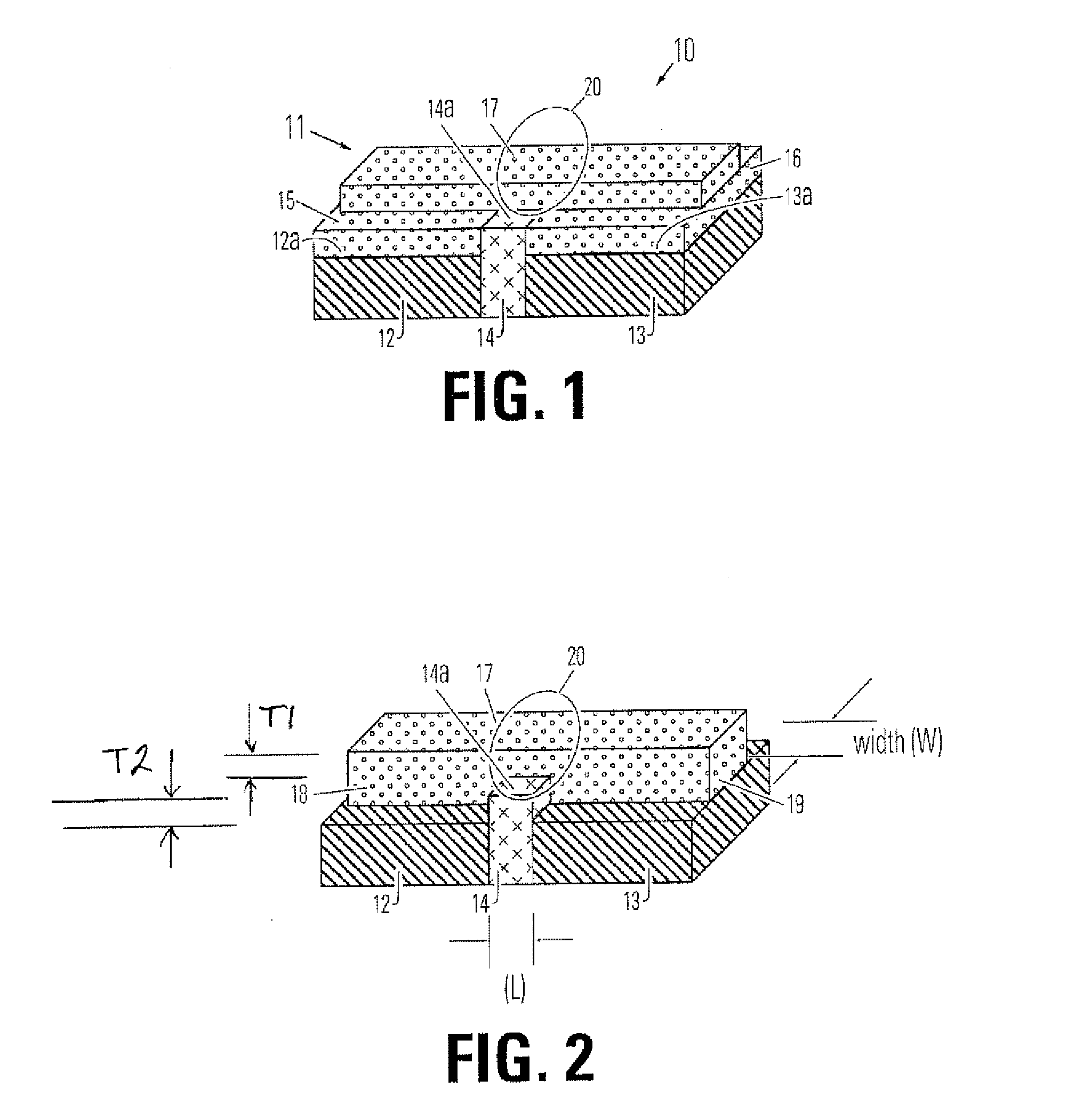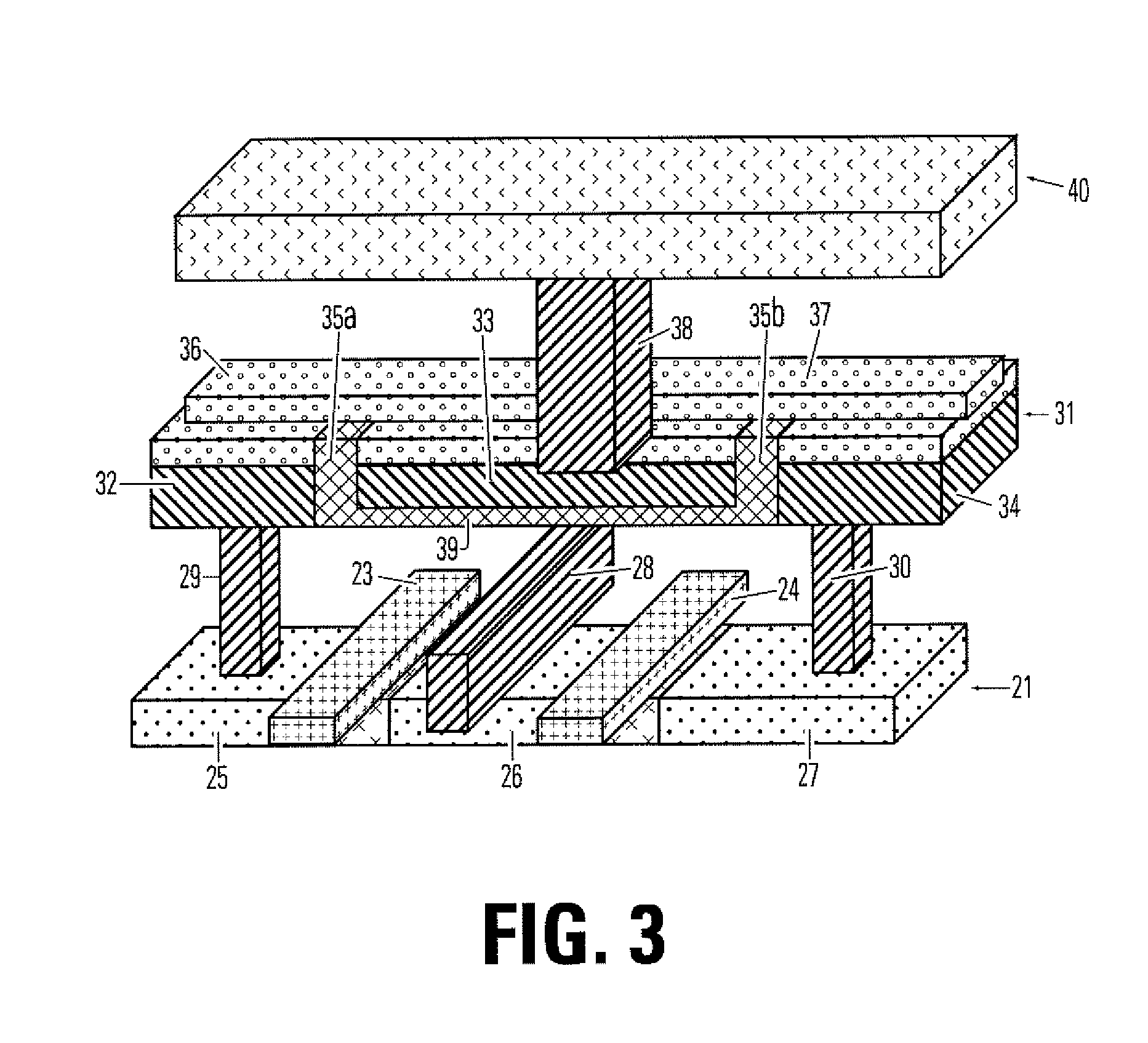Thin Film Fuse Phase Change Cell with Thermal Isolation Pad and Manufacturing Method
a phase change cell and thermal isolation pad technology, applied in semiconductor devices, digital storage, instruments, etc., can solve the problems of manufacturing such devices with very small dimensions, and achieve the effects of low power consumption, small reset current, and simple structur
- Summary
- Abstract
- Description
- Claims
- Application Information
AI Technical Summary
Benefits of technology
Problems solved by technology
Method used
Image
Examples
Embodiment Construction
[0053] A detailed description of thin film fuse phase change memory cells, arrays of such memory cells, and methods for manufacturing such memory cells, is provided with reference to FIGS. 1-22.
[0054]FIG. 1 illustrates a basic structure of a memory cell 10 including a bridge 11 of memory material on an electrode layer which comprises a first electrode 12, a second electrode 13, and an insulating member 14 between the first electrode 12 and the second electrode 13. As illustrated, the first and second electrodes 12, 13 comprise one or more layers of metal such as tungsten, copper, TiN, TaN or other metallic materials, and have top surfaces 12a and 13a. The insulating member 14 extends above the top surfaces 12a and 13a of the first and second electrodes 12, 13 to form a wall of insulating material which has a top surface 14a. The bridge 11 of memory material comprises three components in illustrated example, including a first thermally insulating pad 15 on the surface 12a of the fir...
PUM
 Login to View More
Login to View More Abstract
Description
Claims
Application Information
 Login to View More
Login to View More - R&D
- Intellectual Property
- Life Sciences
- Materials
- Tech Scout
- Unparalleled Data Quality
- Higher Quality Content
- 60% Fewer Hallucinations
Browse by: Latest US Patents, China's latest patents, Technical Efficacy Thesaurus, Application Domain, Technology Topic, Popular Technical Reports.
© 2025 PatSnap. All rights reserved.Legal|Privacy policy|Modern Slavery Act Transparency Statement|Sitemap|About US| Contact US: help@patsnap.com



